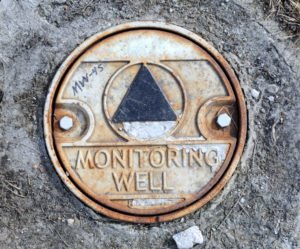
The requirements to design the environmental monitoring well.
Environmental monitoring well design
The main purpose of groundwater monitoring wells is to obtain representative groundwater data, which may include groundwater level, hydraulic conductivity, and groundwater sample analysis data. There are some common errors with the well installation and design for groundwater monitoring wells that may lead to obtain non-representative data. These issues may include the following:
• Use of erroneous construction materials leads to changes in sample chemicals;
• Use of the wrong size of the screen or filter material results in excessive precipitation in the sample;
• Well screen is installed at the wrong depth so that a representative sample can not be obtained;
• wrong filter or well material is selected, resulting in excessive sedimentation to clog the screen sieving, and changes in the chemical properties of the sample;
• The surface seal failure that allows the surface runoff to enter the ground, affecting the representation of the sample.
Therefore, the monitoring well design process needs to meet the following requirements, 1) well with sufficient strength to withstand tension induced by construction process; 2) well not adsorb, desorption, leach out any chemical composition to change the water quality; not cause pollution of groundwater; 4) easy to use and cleaning; 5) cost-effective. To this end, the American Society for Testing and Materials (ASTM) Standard D5092 – Design and Installation of Groundwater Monitoring Wells provides guidelines for monitoring technical specifications and guidelines for monitoring wells.
Proper design and installation also require sufficient study on site geological, chemical, microbial and other environmental data. These knowledge can be obtained through the site characterization. The keys to be considered include: 1) the purpose of groundwater monitoring program 2) surface conditions; 3) hydrogeological conditions; 4) groundwater chemistry and background microbiological condition; 5) contaminant properties; 6) human activities impact; and 7) any applicable regulatory requirements.
In order to obtain the above information, the relevant literature and history of the site shall be evaluated. Detailed data can be obtained through site characterization activities, including the to obtain the 、、 and so on.
Common monitoring well design:
1.Single well screen and well casing:
Single well screen and well casing
2.Multi well casing and single screen:
Multi well casing and single screen
3.Bedrock monitoring well:
Bedrock monitoring well
Bedrock monitoring well
4.Well cluster:
Well cluster
Well cluster
5.Well nest
Well nest
Well nest
6.Multi-level monitoring well
Multi-level monitoring well